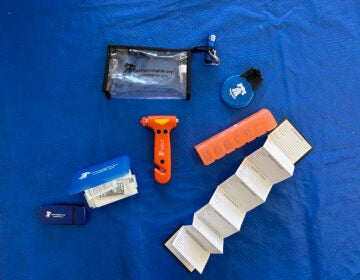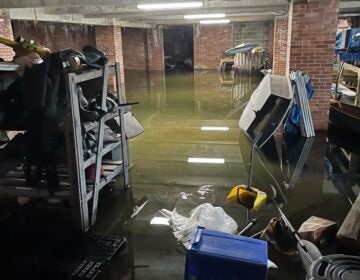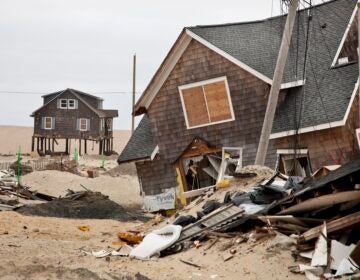One year since Ida: How the remnants of a hurricane still leave Pa. residents paying the price
It has been one year since the remnants of Hurricane Ida battered Philadelphia, Montgomery, Chester, Delaware, and Bucks counties with historic rainfall and strong winds.
This story is part of the WHYY News Climate Desk, bringing you news and solutions for our changing region.
From the Poconos to the Jersey Shore to the mouth of the Delaware Bay, what do you want to know about climate change? What would you like us to cover? Get in touch.
Tammy Echevaria and her family sought refuge in their basement when a tornado started coming toward their home. When the center of the storm passed over their house, the heavy winds fell silent, they each felt a pressure in their chests, their ears popped.
“You couldn’t get a deep breath … I didn’t hear anything. We just heard some snapping, some breaking glass, but no loud bangs, no crashes, no indication of what we were going to see when we got outside,” Echevaria said.
After the storm passed, they walked out of their basement, stepping on bits of their home along the way. Once outside, Echevaria looked up, and saw half of their Upper Dublin house was missing. Pieces of their home had flown across Route 309.
It’s been one year since Hurricane Ida, and Echevaria, 58, her husband, Rick, 60, still don’t have a home of their own. They have been living with her son, while they have been battling with their insurance company to get the funds needed to move forward with demolition and rebuild.
“We need to make ourselves complete again,” Echevaria said.
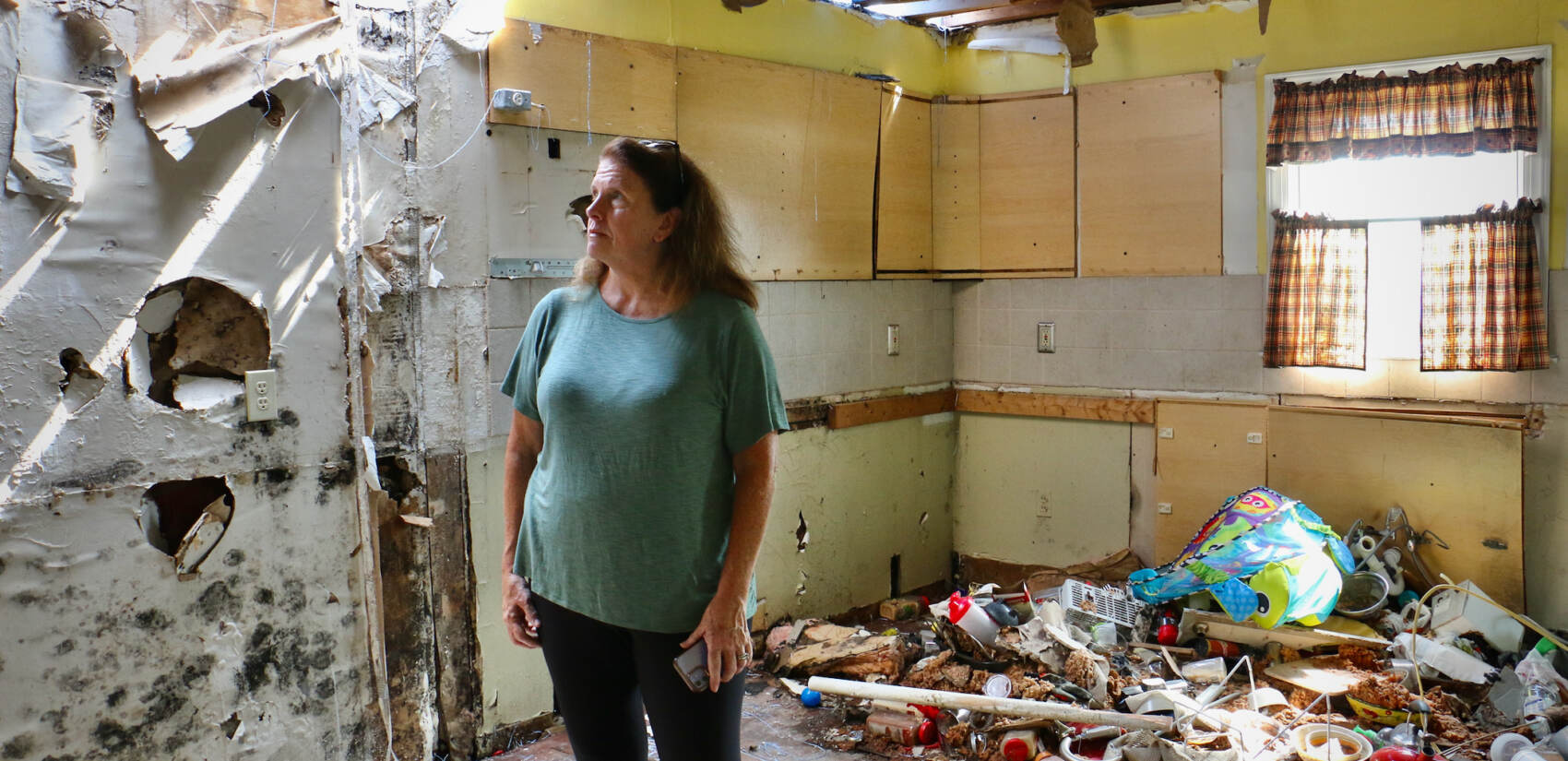
Last September, the remnants of Hurricane Ida battered the Delaware Valley with historic rainfall and strong winds.
At its peak, Ida was a powerful Category 4 hurricane. By the time it arrived over the Mid-Atlantic United States, it was weaker — but still mighty.
The quick-moving storm caused waterways in Southeastern Pennsylvania to overflow and rise above their banks, putting houses and businesses underwater. The month ended up being Pennsylvania’s seventh wettest September ever.
An unlucky few spared by the floods had their houses ripped from their foundations by one of the five tornadoes that touched down in the commonwealth.
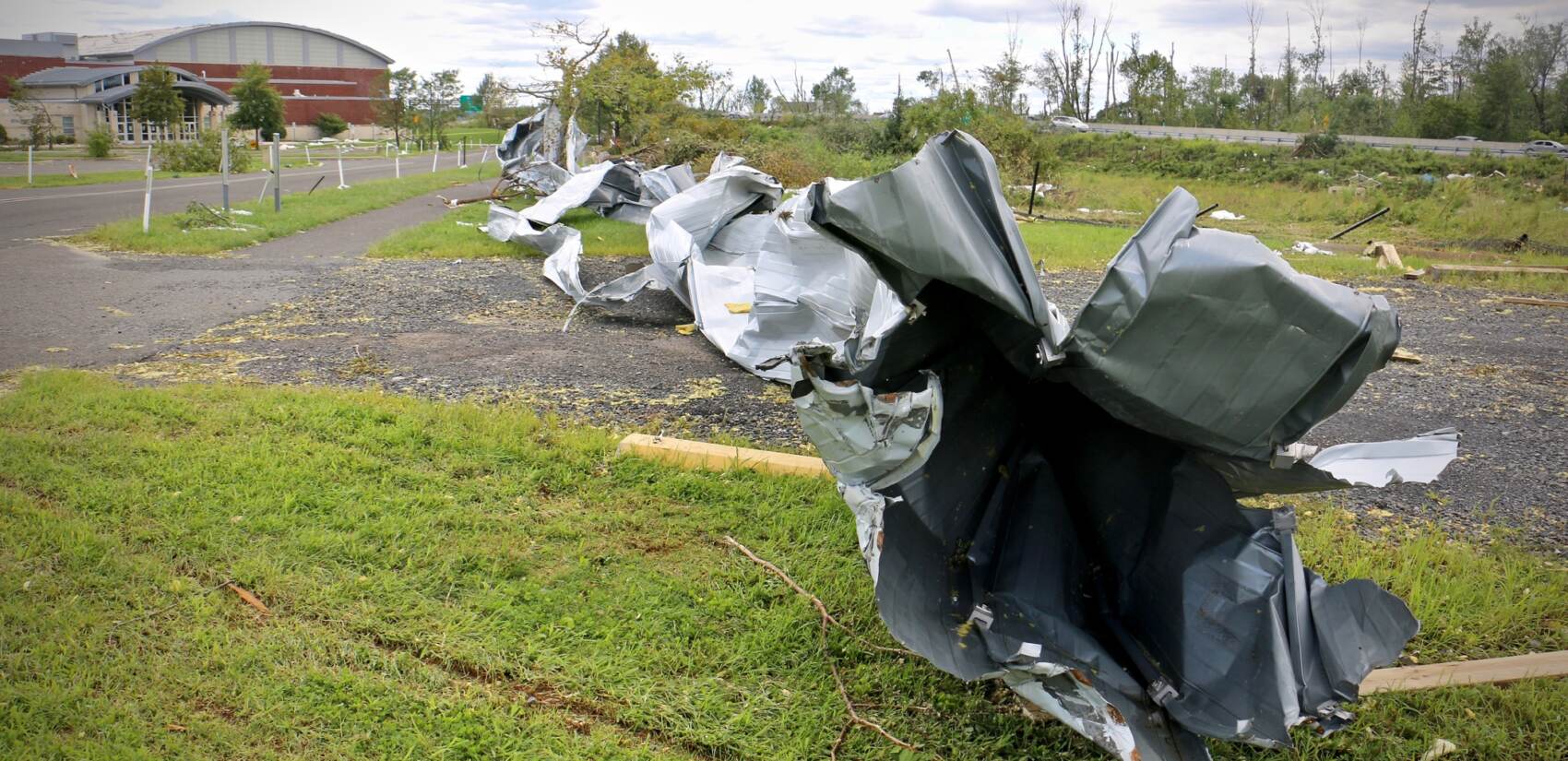
Five people died as a result of the storm. In the following weeks, state emergency officials determined that more than 3,500 single-family homes, manufactured homes, or multi-family buildings in Pennsylvania were affected but habitable. More than 1,200 homes or buildings sustained minor damage, and more than 500 sustained major damage. Close to 70 homes or buildings were classified as destroyed.
Some people shared stories of swimming out of their homes to see their vehicles floating in the streets. They lost everything.
The National Hurricane Center estimated that there was roughly $3 billion in damage — and of course, the immeasurable emotional toll is unforgettable.
In the immediate aftermath, local, state and federal government agencies opened recovery and resource centers in Philadelphia, Montgomery, Bucks, Chester and Delaware counties for displaced and affected residents.
Ultimately, more than 43,000 individuals and households in Pennsylvania received assistance from FEMA, most of them in the city of Philadelphia. The agency approved roughly $124 million for PA families, about $96 million of which went to help families pay rent for temporary housing or make repairs to their homes.
FEMA’s individual and household assistance is only for uninsured or under-insured damage, and is meant to meet families’ basic needs — not return them to a pre-disaster state. The program can also help families repair their homes in ways that make them stronger and more durable. In addition to housing-related help, the program can also replace personal possessions like appliances or a car, if it’s a family’s only form of transportation.
As of this spring, the average household in Pennsylvania had received $3,600 for housing assistance and $1,000 in other assistance after Ida. The deadline to apply was in January.
A speedy recovery was in order for some community members, but others haven’t been so lucky. Some of Ida’s survivors say they are still paying the price.
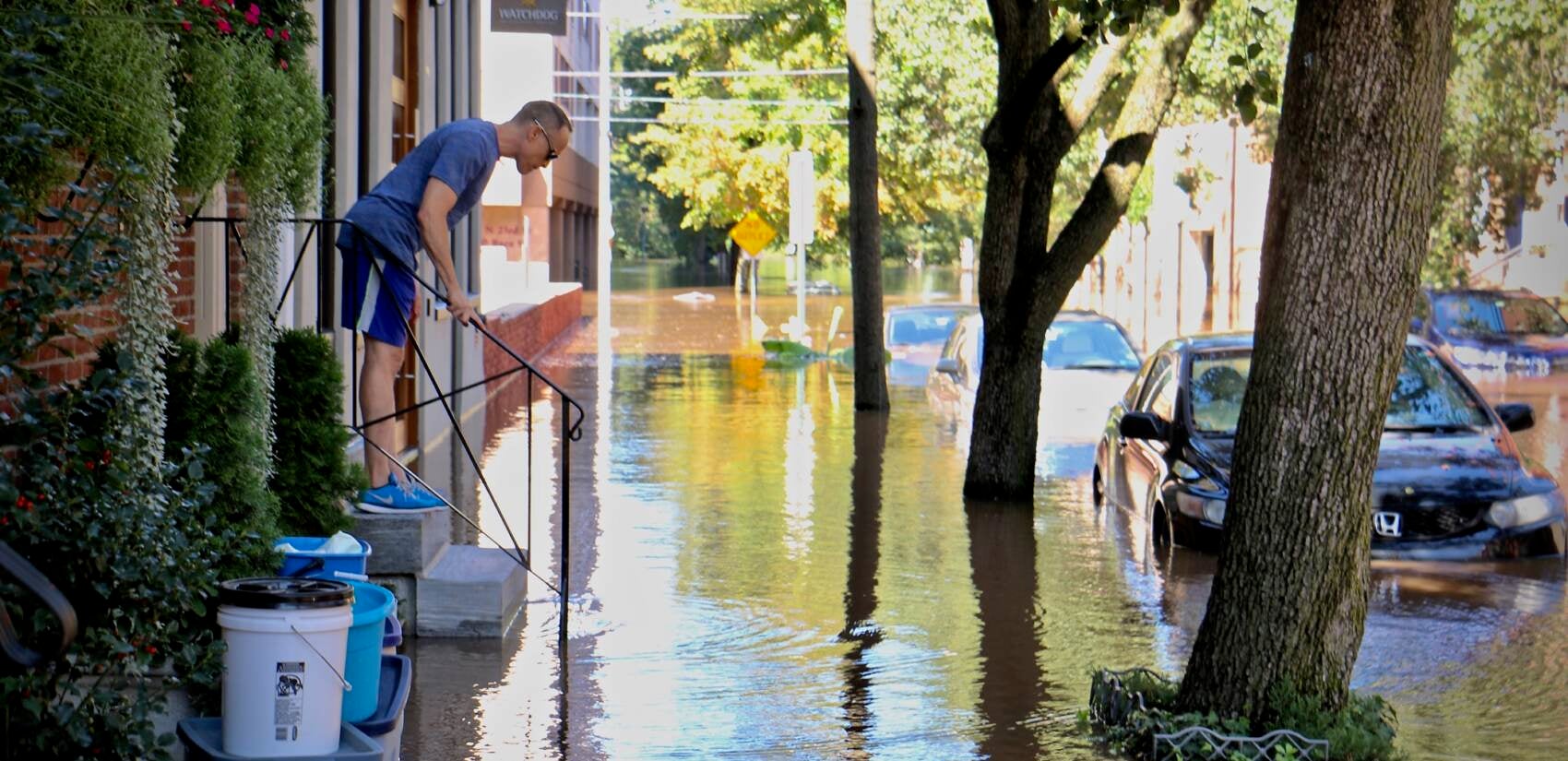
Battles with insurance exhaust Montgomery County residents
Upper Dublin fell along one tornado’s path of destruction. Tons of trees lined the roads and hit homes throughout the township. More than 200 homes in the township had major damage, according to Upper Dublin Emergency Management Coordinator Tim Schuck. Of those, 115 homes were deemed uninhabitable, according to Liz Ridgeway, Upper Dublin’s Hurricane Ida Recovery Resources Coordinator.
Ridgeway said fewer than half of those families are still displaced from their homes.
She hopes to dispel any myth that residents in Upper Dublin, a community with an average household income of $138,316, have recovered from the storm.
“The reality is, I know I don’t have $100,000 or $200,000 in the bank to rebuild my house if that was what was needed tomorrow,” Ridgeway said. “And I don’t know too many people that do, even if you live in a nice home, in a nice community. And that’s been really startling, the lack of resources for all levels of people recovering from a natural disaster.”
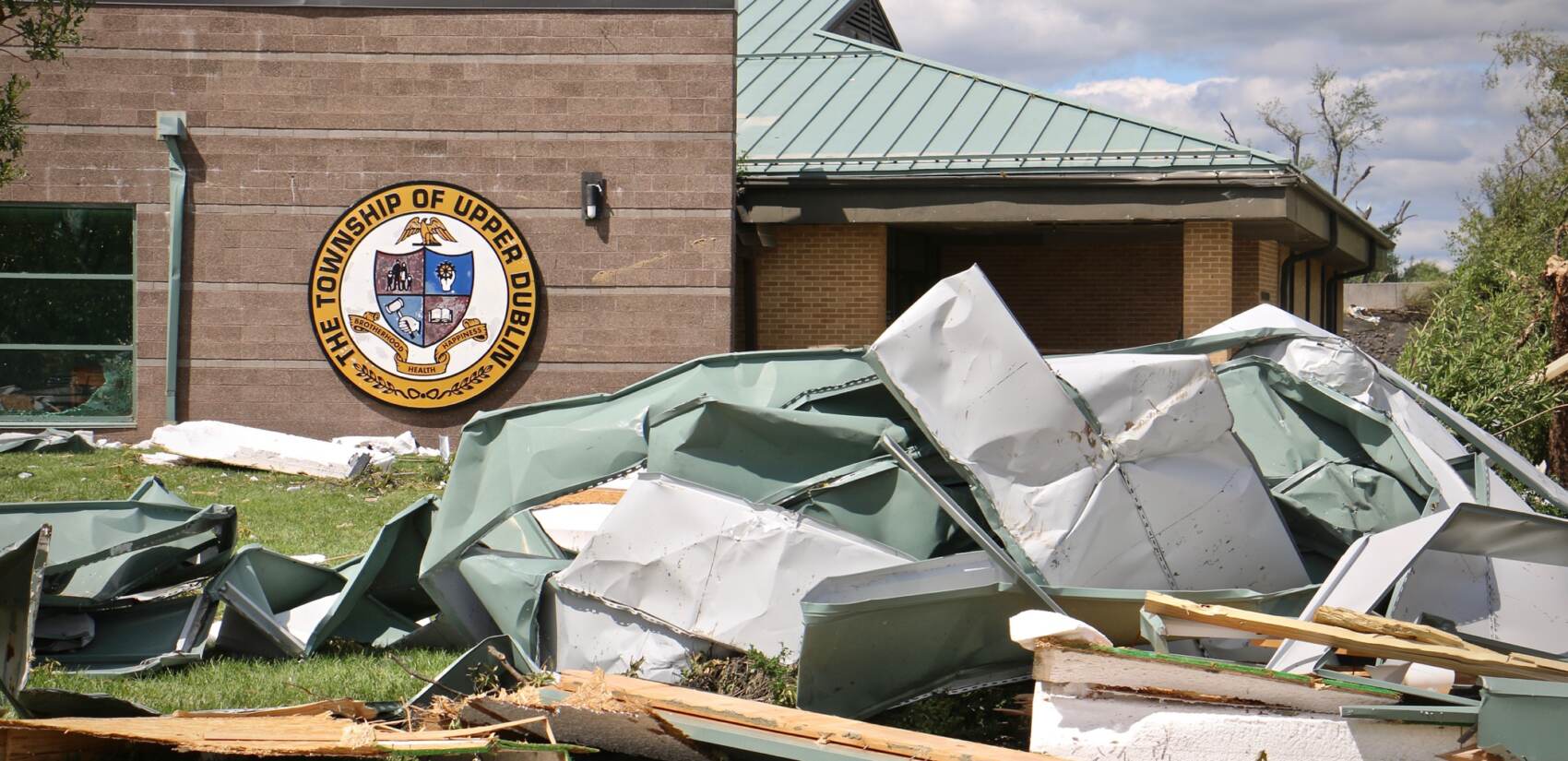
Life has, in some ways, been in a standstill for Echevaria and her family in Upper Dublin. Without a new home, she said, they have felt less whole.
“My poor husband had a triple bypass and he has to sleep in someone else’s house,” Echevaria said. “These last two weeks has been worse than this time last year because he should have been able to go home and sleep in his own bed. And we couldn’t do that.”
Echevaria said insurance claimed the house was structurally sound, and they felt it could be repaired, even though half of it is missing.
“It has sat for a year and there is black mold everywhere, there is mildew, there is insulation everywhere,” Echevaria said. Yet, the insurance company, last month, came to see what items left in the home could be remediated or cleaned.
With the insurance company, Echeveria has had to go through all the items they claimed were lost because of the storm — jeans, perfume bottles, tires, over 2,700 objects. “It truly felt like she was accusing us of fraud,” Echevaria said.
For example, “We didn’t have central air. We had window air units,” she said. “They covered one air conditioner, gave us $5 for it, and denied all of the others saying it was a duplicate request … what house has one window unit?”
Two weeks ago, the insurance company finally deemed the house a total loss. Echevaria is now expecting a check, so they can move forward with a demolition. The company also just approved covering the costs of most of their lost belongings.
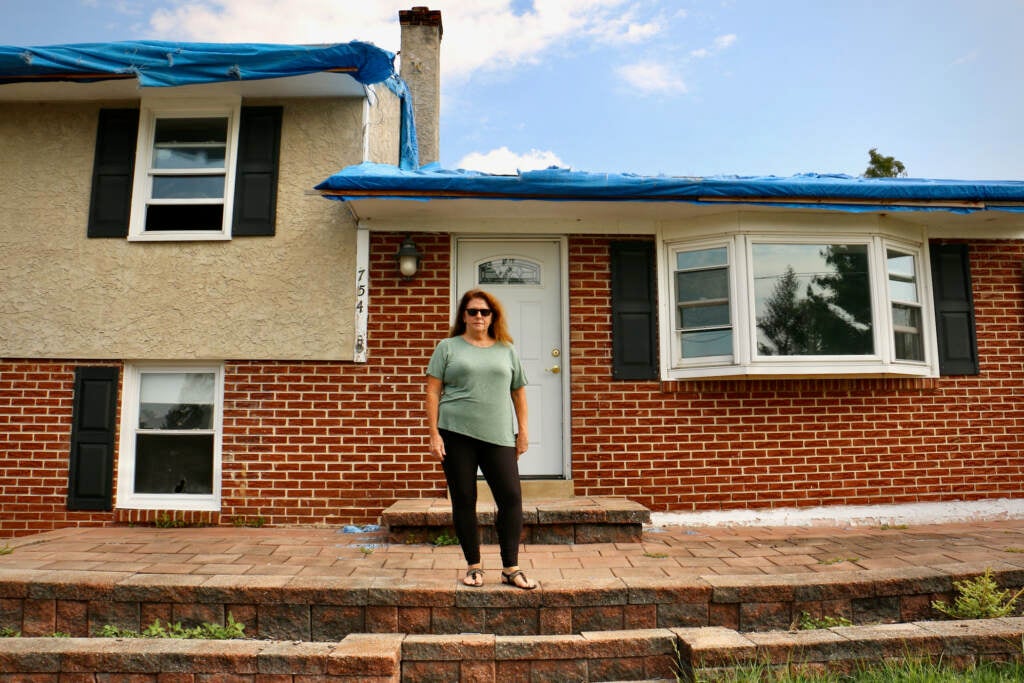
Echevaria and her husband plan to take out a second mortgage and rebuild in the same spot, where her grandmother’s home once stood and where she grew up.
“It should never have taken this long,” Echevaria said. “I am feeling better about how we have ended up. But why did we have to fight like this? Why did we have to fight and claw and beg for everything that we’re getting?”
Echevarisa said it felt like the company was using “delay tactic after delay tactic,” to slow the process, and wear them down.
“You just become exhausted. You can’t even fight anymore. You don’t know who to trust. You don’t know who to believe. It becomes so overwhelming that you just can’t even process it,” Echevaria said. “The insurance system is broken.”
Echevaria isn’t alone in her battle with insurance. State Rep. Todd Stephens’ office has been working with Upper Dublin families dealing with insurance claim issues.
“I’ve got some folks whose alternative living expense coverage is expiring and the gap is, you know, north of $150,000. So in that instance, it’s not in the company’s best interest to settle,” Stephens said. “It’s in their best interest to drag it out because all the leverage shifts in the favor of the insurance company once that one year mark comes up, because now these families have nowhere to live.”
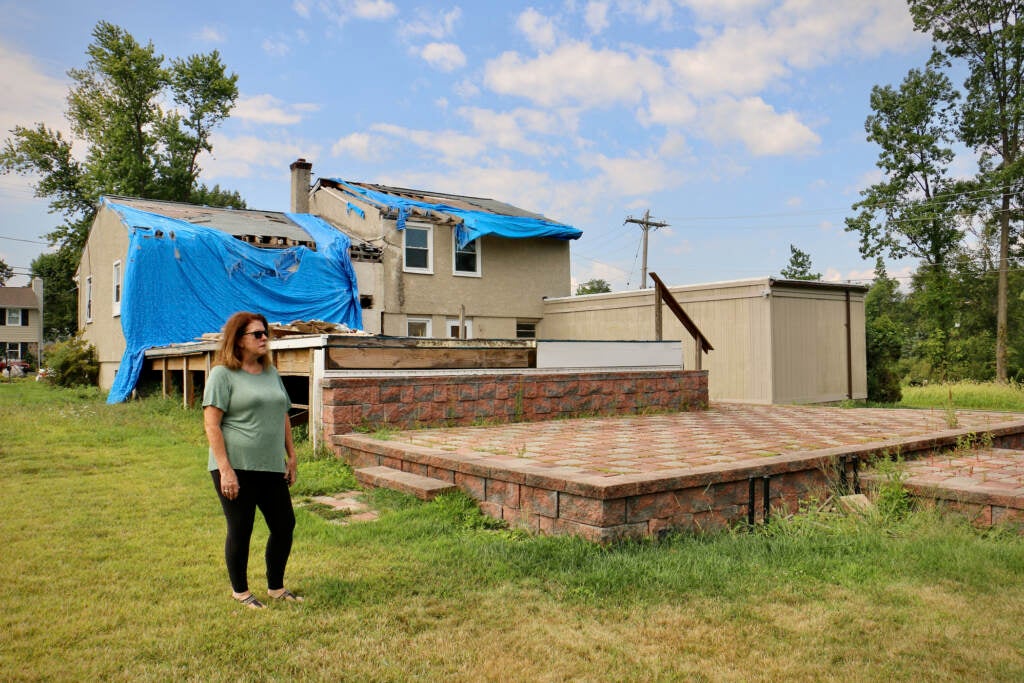
Stephens said he wants to make legislative changes around the speediness of insurance companies’ response times with families and public adjusters. “The current timelines clearly aren’t working for many families,” he said. “It really puts them under the gun in terms of having to accept an offer from an insurance company that might be much lower than they are entitled to.”
Some of those displaced families, like Joanna Waldron’s, have been relying on their insurance company’s “Alternative Living Expenses” (ALE) coverage for rental costs as they struggle to settle a claim.
But as the one-year Ida anniversary arrives, ALE terms are ending for many. Waldron applied for an extension so the family can wait for their contractor to finish the work on their Upper Dublin home, which the township deemed uninhabitable.
Waldron said she’s not sure if they will be granted the extension. If not, they would rely on support from family and friends, or pull from something like their retirement account.
“Having to deal with not knowing whether you’re going to have the coverage or going to have the extension of the ALE, and where you’re going to live … It’s very stressful,” Waldron said. “On top of trying to manage a big home rebuilding project where you have to fight for every single dollar to try to make the repairs that the insurance company is telling you you’re entitled to.”
Because of that ALE deadline, a Montgomery County representative said the county “expects to see an uptick in disaster assistance requests from Upper Dublin residents still waiting on completion of home repairs in the coming weeks.”
Montgomery County working class families still under water
In Norristown, Eric Fagan’s entire first-floor apartment was under water.
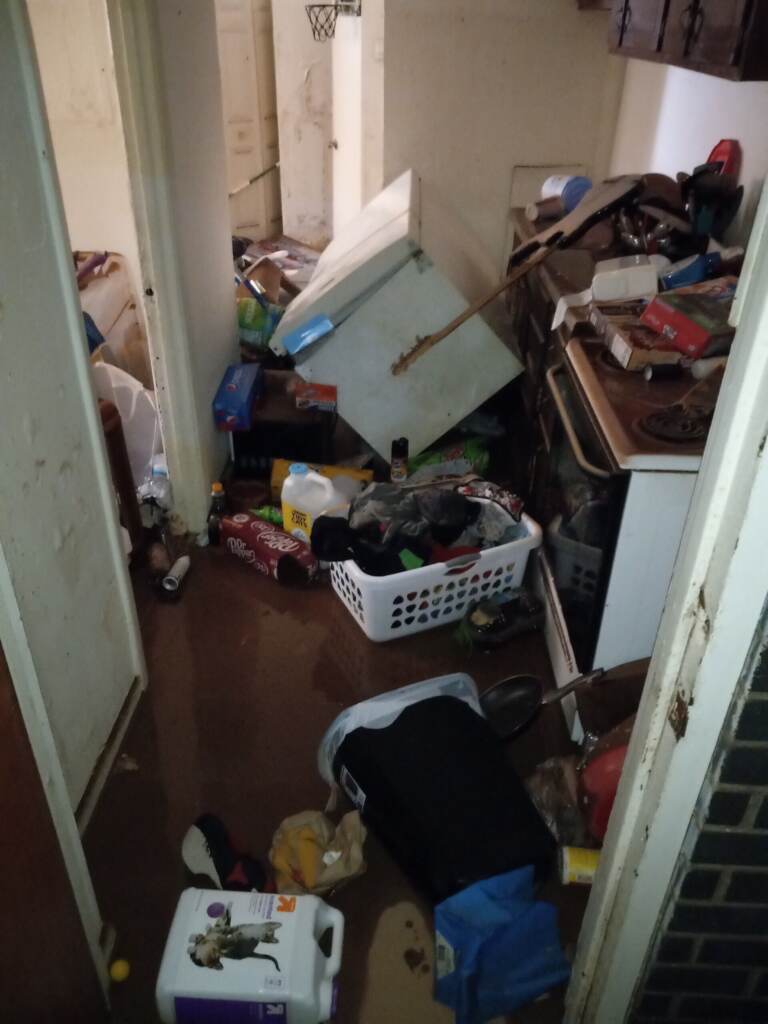
Fagan lived in a stand-alone building on Dekalb Street in Norristown with his son, Eric Fagan Jr., and father, Craig Brown, when Hurricane Ida hit. The building is roughly 60 feet from the Schuylkill River, where the water crested at 26.85 feet, 13 feet above flood stage, surpassing all-time records, according to Montgomery County Commissioner Val Arkoosh.
“We lost everything that we had, just in that day,” Fagan said. “All we made it out with was the clothes on our back. I think I wore the same outfit for about four days straight.”
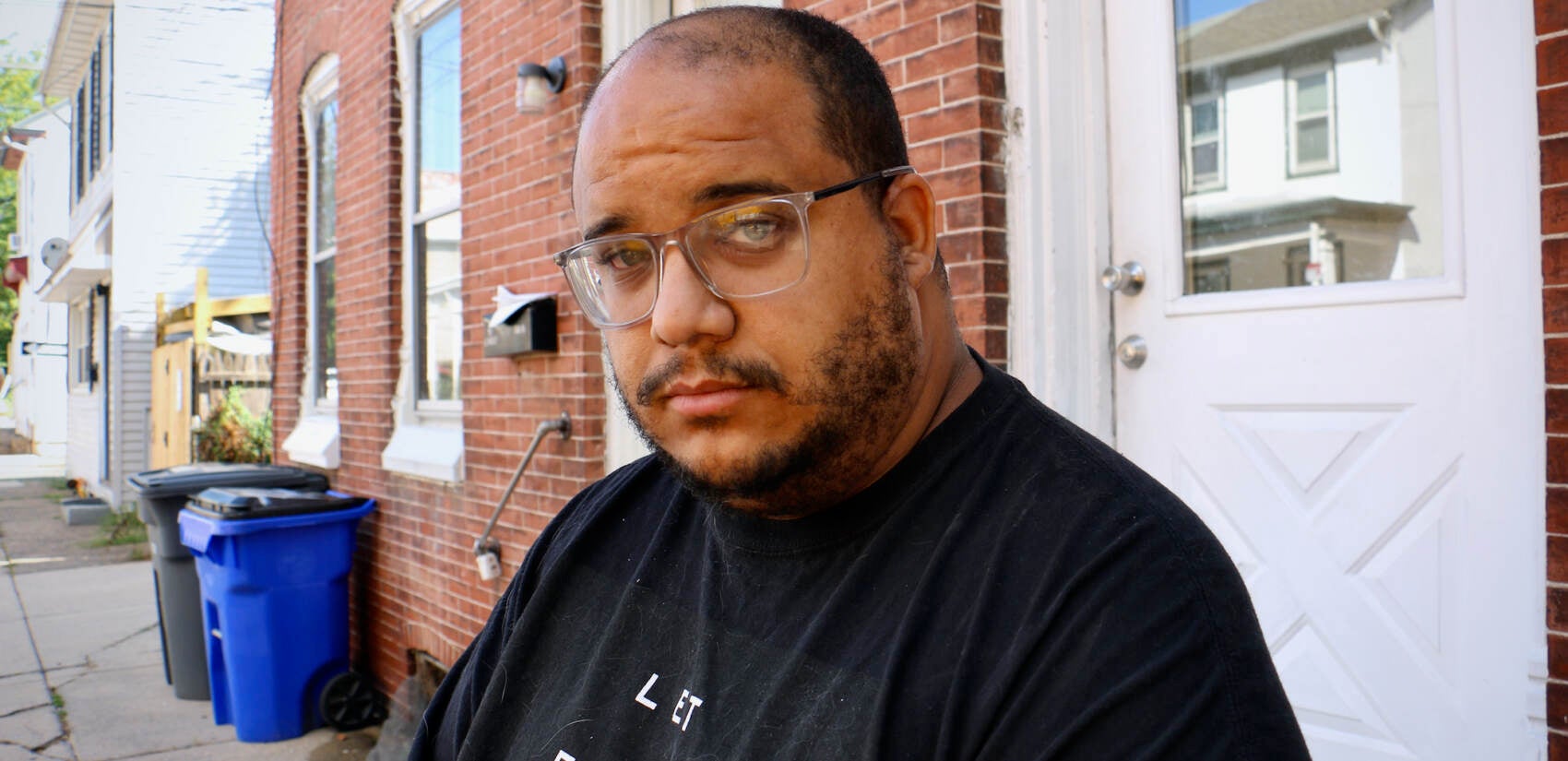
Along the Schuylkill River in Norristown and Bridgeport, many other residents were devastated by flooding. At least 230 houses were deemed uninhabitable, and 800 people had been displaced, officials said. There were 467 water rescues throughout the county.
Brown, 66, stayed in a hotel for about three months, while the elder Fagan, 32, stayed with his girlfriend in Bridgeport.
The county reimbursed most of his hotel costs. For the last 10 months, the county’s emergency hotel program provided lodging for 217 households, totaling 513 people.
Fagan was eventually forced to move out of Norristown. After he lost his $725-a-month apartment, he could not find anything in the area for close to the same rate. He eventually found a place in Pottstown for $1,100 per month.
According to the Montgomery County Planning Commission, rents in Norristown have gone up nearly 28% over the last 5 years. A county housing affordability study released in May 2021 showed more than half of renters in Montgomery County are paying more than 30% of their monthly income toward their rent.
Pottstown is about a 40-minute drive away from Norristown. Fagan and his father both lived in Norristown their whole lives. The move has been a difficult transition. They feel disconnected from their community and resources.
And financially, the family is still reeling from Hurricane Ida.
“We had to deal with the flood, we had to deal with most of us losing everything. And then we had to go into inflation, regular inflation, gas inflation. We got really smacked over this last year with things,” Fagan said. “Coming back from it has not been easy at all.” His monthly bills have gone up from about $900 dollars a month, to over $1,600. He pays more for gas now, having to travel from Pottstown to Lansdale for work, a 50-minute ride.
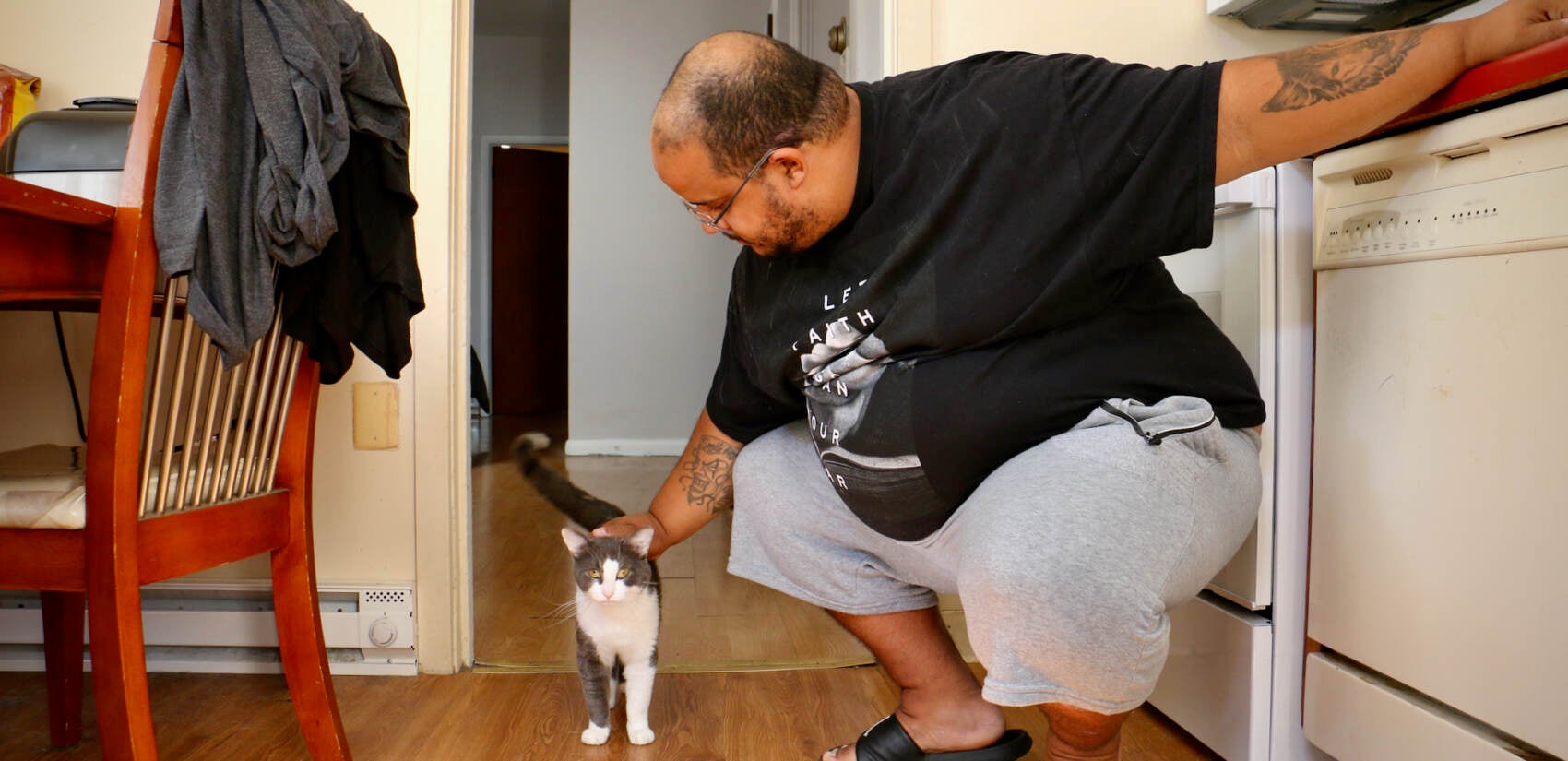
And Fagan is still trying to get aid from FEMA, awaiting money for the loss of his personal property.
He first applied straight to FEMA for aid, and three months later FEMA told him to apply through the Small Businesses Association instead, first. Fagan said he’s had to submit four additional rounds of paperwork to the SBA — he just sent more paperwork over last week.
“I don’t have daily access to printers and scanners. So getting this paperwork back and forth can be very, very busy and taxing,” Fagan said. “That paperwork alone, it takes a lot out of you.”
Fagan is expecting about $8,000 from FEMA. But that isn’t enough to get back to their normal. Fagan works at a manufacturing company that makes springs for window frames, and supports his son and father.

“To financially recover from that still costs more than $10,000 because I got to buy couches and appliances and beds and dressers,” Fagan said.
While exhausted by the mounds of paperwork for the SBA, and supporting his family, he hasn’t been able to find additional support. He feels he has fallen through the cracks, during a time when many of his neighbors were vying for the same kind of resources. “Maybe we got forgotten about,” he said. “We got lost in the shuffle.”
Fagan said for future crises, he hopes people can get more and faster information on how to utilize resources, like FEMA aid. “I think a lot of people might have missed out on certain things or certain processes weren’t explained to them properly. And that’s what happened to me,” Fagan said.
Recently a network of social resources formed to assist Montgomery County residents in future crises, and continue to support Ida survivors.
The network is called the Disaster Case Management Program (DCMP), and is made up of Montgomery County OIC, ACLAMO, CADCOM, Pennsylvania Department of Human Services, and Disaster Services Corporation Society of St. Vincent DePaul. Families can connect with a free case manager who can advocate on behalf of the individuals with FEMA, insurance companies, the SBA, and other disaster related services.
Montgomery County OIC is working with 22 county families, mostly from Norristown, on Ida-related case management.
Two of their families are still living in hotels. But most of the needs have shifted away from finding housing. Now that Ida survivors are paying a lot more for rent than before, they come to Montgomery County OIC for basic necessities; food, clothing, furniture, cleaning supplies, deodorant, and assistance with rent, according to Veronis Lawyer, the database and case management administrator for OIC.
While most have been placed in housing, it’s been difficult to find permanent and affordable housing in the area, Lawyer said. Those who were displaced, half of them were renters and low income, and some were retired and on a fixed income.
Many affordable housing units in Norristown and Bridgeport, some of the poorest areas in the county, were deemed uninhabitable. More than 120 affordable housing units were lost in Norristown. In Bridgeport, the price of a two-bedroom rental has increased by 75% in the past six years.
“There wasn’t any additional low-income housing — aside from where they were,” Lawyer said.
‘I lost everything’: Philly residents hope to rebuild stronger
By the time Lisa and Roger Hamilton were rescued from their riverside home in Upper Roxborough, the flood waters were up to Lisa’s neck.
“We were scared to death,” she said.
Hamilton called 911 five or six times, starting when the water was up to her knees. It kept rising. When emergency responders finally picked the couple up by boat, Hamilton remembers, they had trouble getting the engine started.
“I thought, ‘Oh my God, I’m going to die in an inflatable boat going down the river,’” she said.
The couple made it through, but they’re far from back to normal.
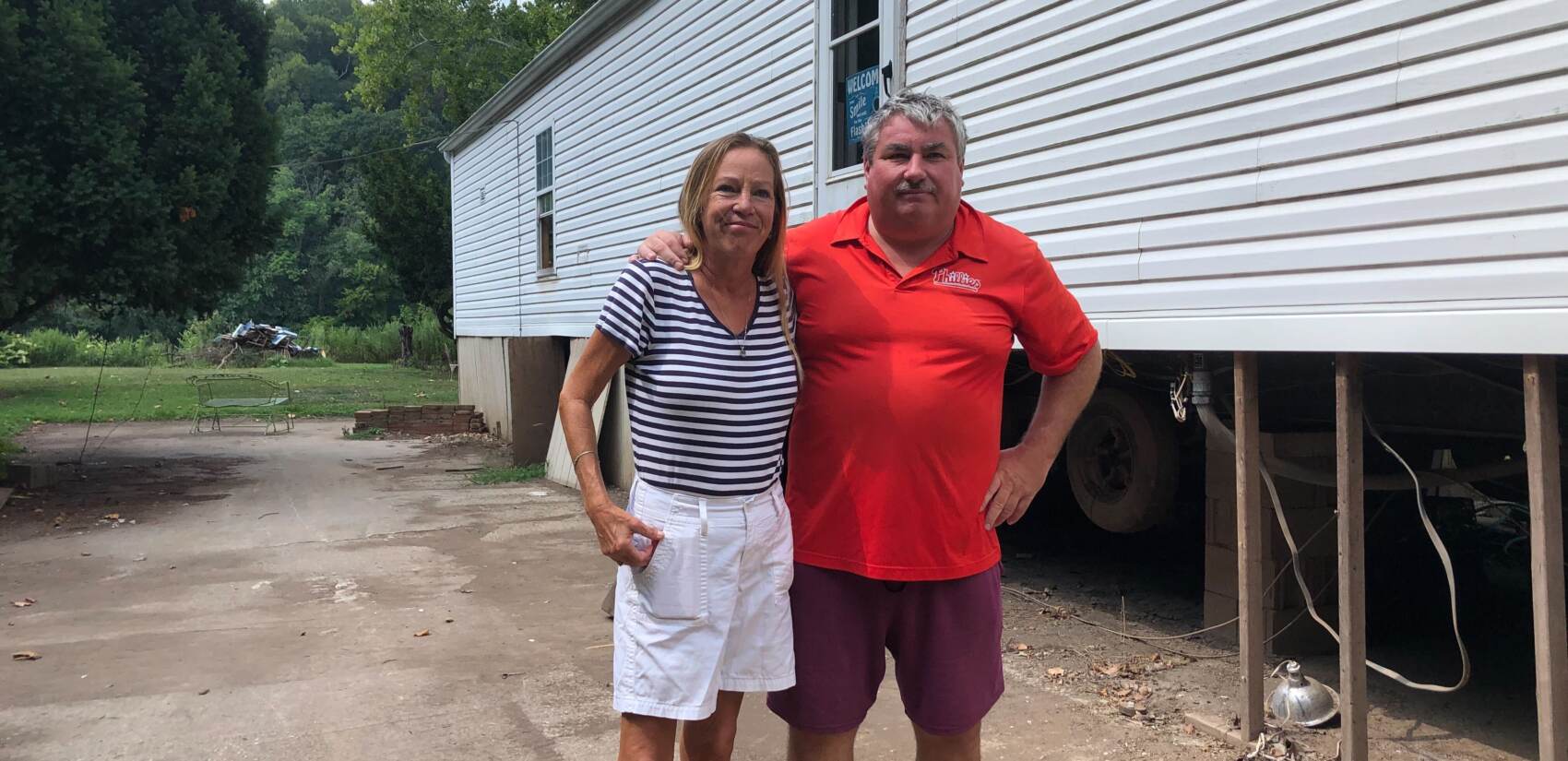
Their big, white trailer rests on piles of cinder blocks, about 5 feet off the ground, just about 50 feet away from the bank of the Schuylkill River. Trailers, ranches and two-story homes sit on large lots with plenty of trees. Parked boats and trucks dot the landscape. Their neighborhood has a peaceful, rural feel, just inside the border of the city of Philadelphia.
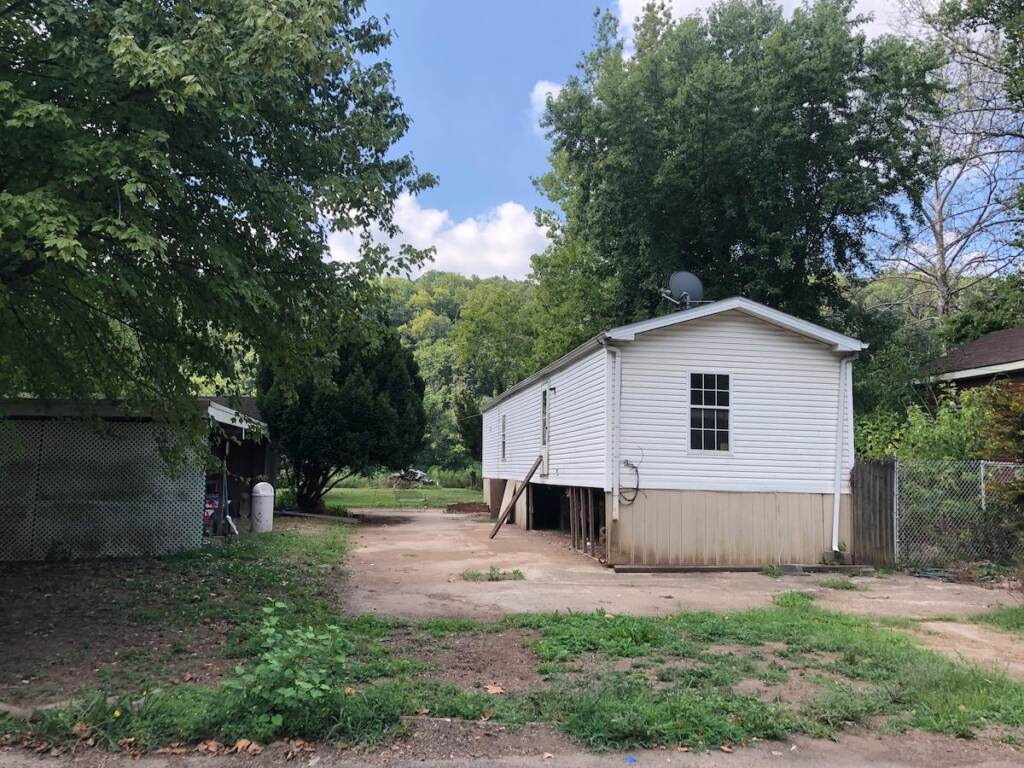
Last September, the neighborhood was under water. The community is still struggling to recover. Some neighbors are in the process of repairing their homes, while others have moved away, the couple said.
“The flood destroyed a lot of lives,” Roger Hamilton said.
The Hamiltons had to rip out their flood-damaged walls, flooring and furniture. They lost keepsakes, like their wedding album.
“Sixty years of stuff that I collected,” Lisa Hamilton said. “I lost everything.”
But the Hamiltons are building back — and hoping to make their home more resilient to flooding in the future.
They got assistance from FEMA, but it wasn’t enough to cover even the materials needed for repairs, (Roger Hamilton said FEMA was “harder to deal with than the flood.”) So the couple is doing the renovations themselves, while living in a rental unit they own nearby.
In their flood-damaged trailer, new mold-resistant insulation fills the walls, fresh wood covers some of them, and the ceiling gleams white with mold-resistant paint. Some interior walls are unfinished, which Roger Hamilton said is a result of supply chain delays.
“The walls are not drywall; they’re knotty pine wood,” Roger Hamilton said. “The floors are not rugged. I put a Durock [cement board] down with a porcelain tile on top of it. So it’s pretty much indestructible.”
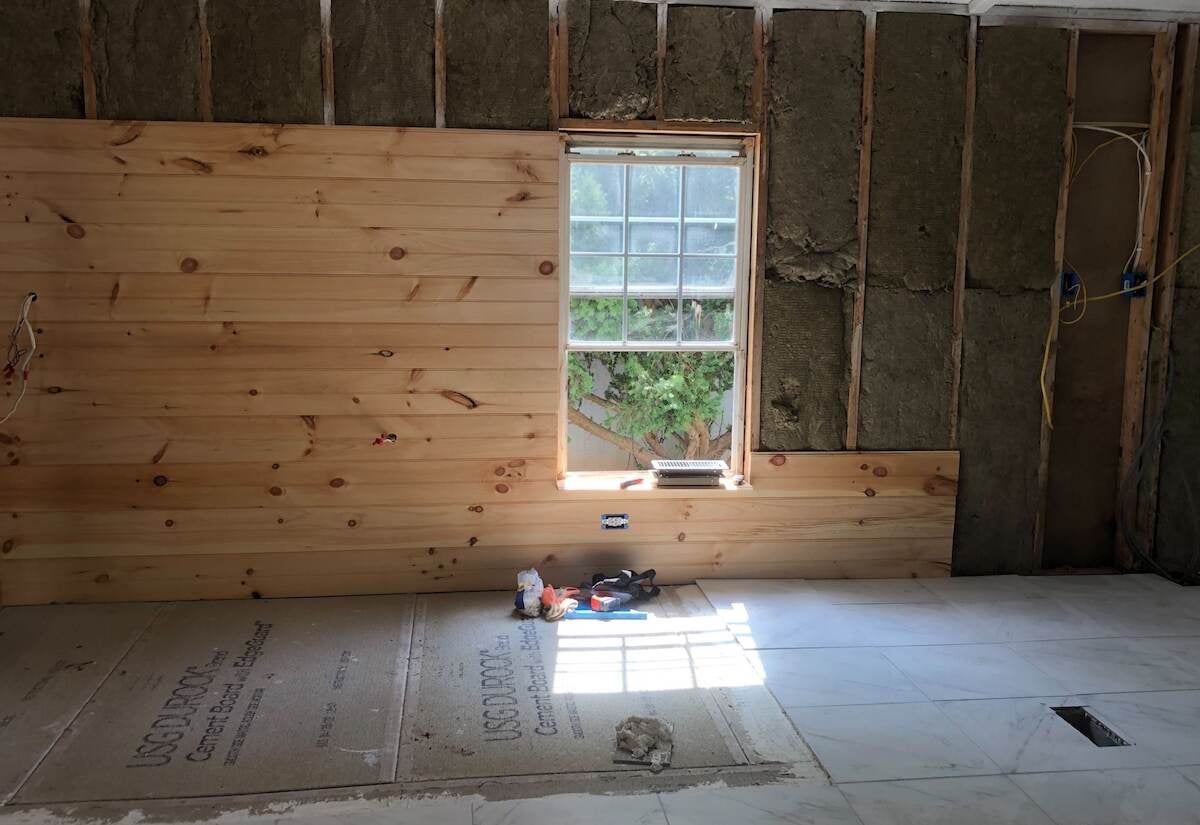
Across the street, their neighbor, Stephen Wojciechowski, is still displaced, as well. He’s retired from the Montgomery County parks department, and in order to repair his home, he’s been supplementing the small amount of aid he got from FEMA with his Social Security disability checks.
Wojciechowski said the flood destroyed everything he “ever owned.”
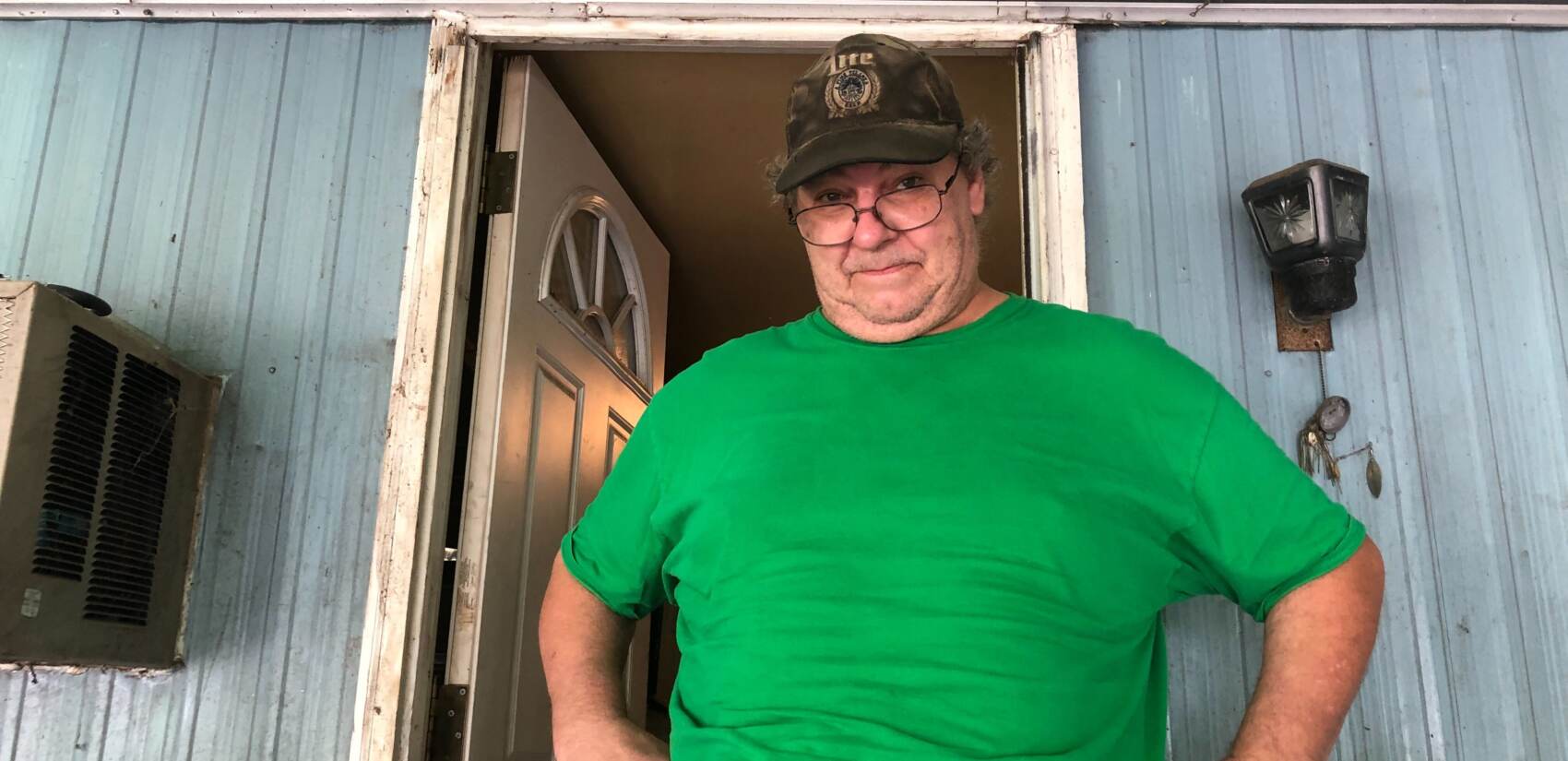
Now he’s battling mildew. He estimates that only a quarter of the work is done to get his home livable again. Contractors are still pulling out damaged materials, including flooring and insulation. A pile of warped plywood and linoleum sat in his yard Monday, waiting for a dumpster.

Wojciechowski had hoped to rebuild his home stronger. He’d love to replace it with a new double-wide modular home, raised up 6 feet. But that’s out of reach.
“At my age, taking out a loan for that kind of money?” he said. “I just don’t have the money to do that.”
So he’s settling for building his home back, just the way it was. Wojciechowski expects the river to flood again. He’ll weather one more flood that makes it into his home, he said, and then he’ll move away.
“We live on the river,” he said. “Not a matter of if, it’s a matter of when she comes up. … What do you do to prepare for it? Prepare for the worst and pray for the best.”
In Philly’s East Falls neighborhood, another family dreams of flood-proofing their home.
Ida’s floodwaters rushed into the basement of Nelson Haakenson’s three-story row home, destroying his hot water heaters and boiler, historic family photos and letters, and children’s toys — and cracking the chimney. Haakenson credits sanitation and utility company workers with making recovery in the immediate aftermath of the flood easier. But the disaster ultimately cost the family with three kids thousands of dollars, and is one reason Haakenson, a semi-retired painting contractor and landlord, is now looking to pick up more work.
“It did take a big, big bite out of what I had saved up,” he said.
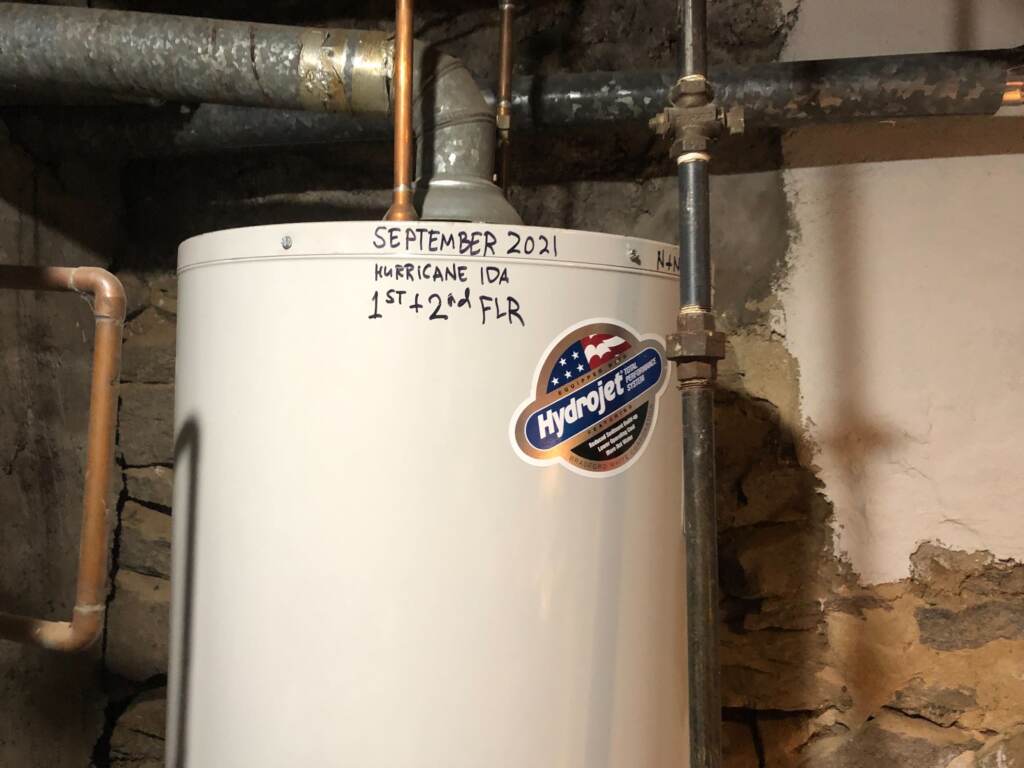
Haakenson hopes to one day raise his boiler, hot water heaters and electric utilities up out of the reach of flood waters. But he priced it out, and found it could cost tens of thousands of dollars — something he can’t afford right now. He’s also been giving some thought to moving.
“The facts of global warming are just, they’re clear,” he said. “I‘m scared about seeing, you know, 12 feet of water out here, and people getting hurt.”
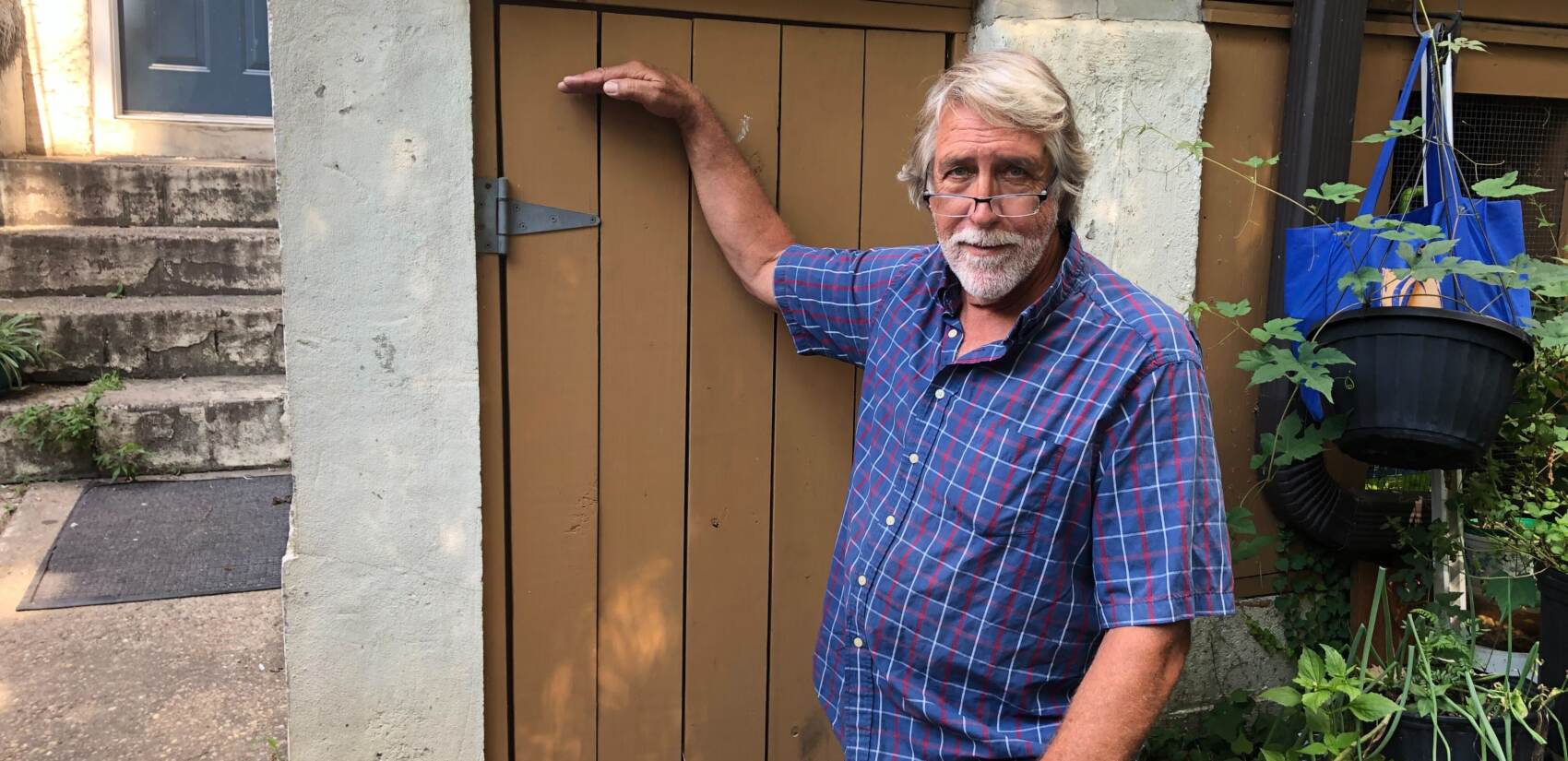
Ida has climate change’s fingerprints all over it
Scientists say climate change makes rapidly intensifying hurricanes, like Ida, more likely. A warmer atmosphere also holds more moisture, leading to more intense rainfall.
Dr. Daniel Gilford, a climate scientist at Climate Central, called hurricanes “giant heat engines.” A hotter climate caused by the climate crisis is only adding more fuel to the fire.
“Climate change can interact with hurricanes in a host of different ways. We know that as we increase the atmospheric temperatures, that increase in energy also gets down into the ocean. And when a storm like a hurricane moves over the ocean, the warmer they are, the more energy. More energy in the storm means more winds and faster moving storms and more dramatic and more intense hurricanes,” Gilford said.
Ida stood out for its ability to maintain its power up the coast. Although it weakened like most storms do as they move northward, according to Gilford, it has its speed to credit for the damage that it caused — especially in inland areas.
“I think Ida is really interesting, because it really sort of illustrates how these storms can be damaging from a flood perspective and not from bringing water on shore through sort of a storm surge method,” Gilford said.
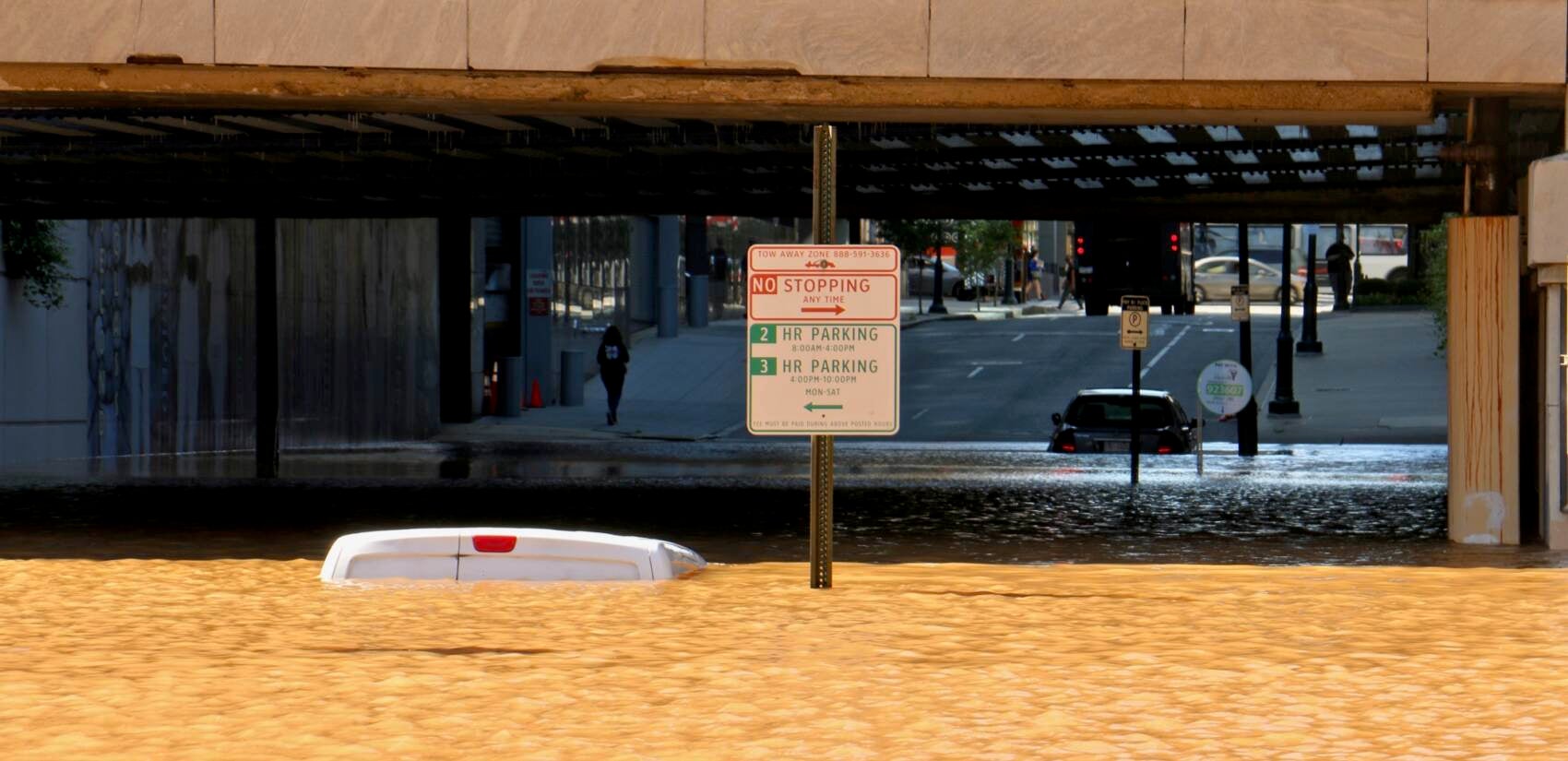
He said that Ida took advantage of the fact that there is so much moisture in the atmosphere and did not have to rely solely on warm ocean water. In this particular case, he said that the increased atmospheric moisture likely contributed to increased rain.
Going forward, Gilford believes that the government has a responsibility to remain vigilant to how they can protect citizens from these storms using resilience measures.
“And when we’re thinking about the way in which we’re interacting with our built environments with populations, we’re thinking about questions of equities, climate change, and especially on the east coast — how hurricanes interact with climate change — should be a major consideration,” Gilford said.
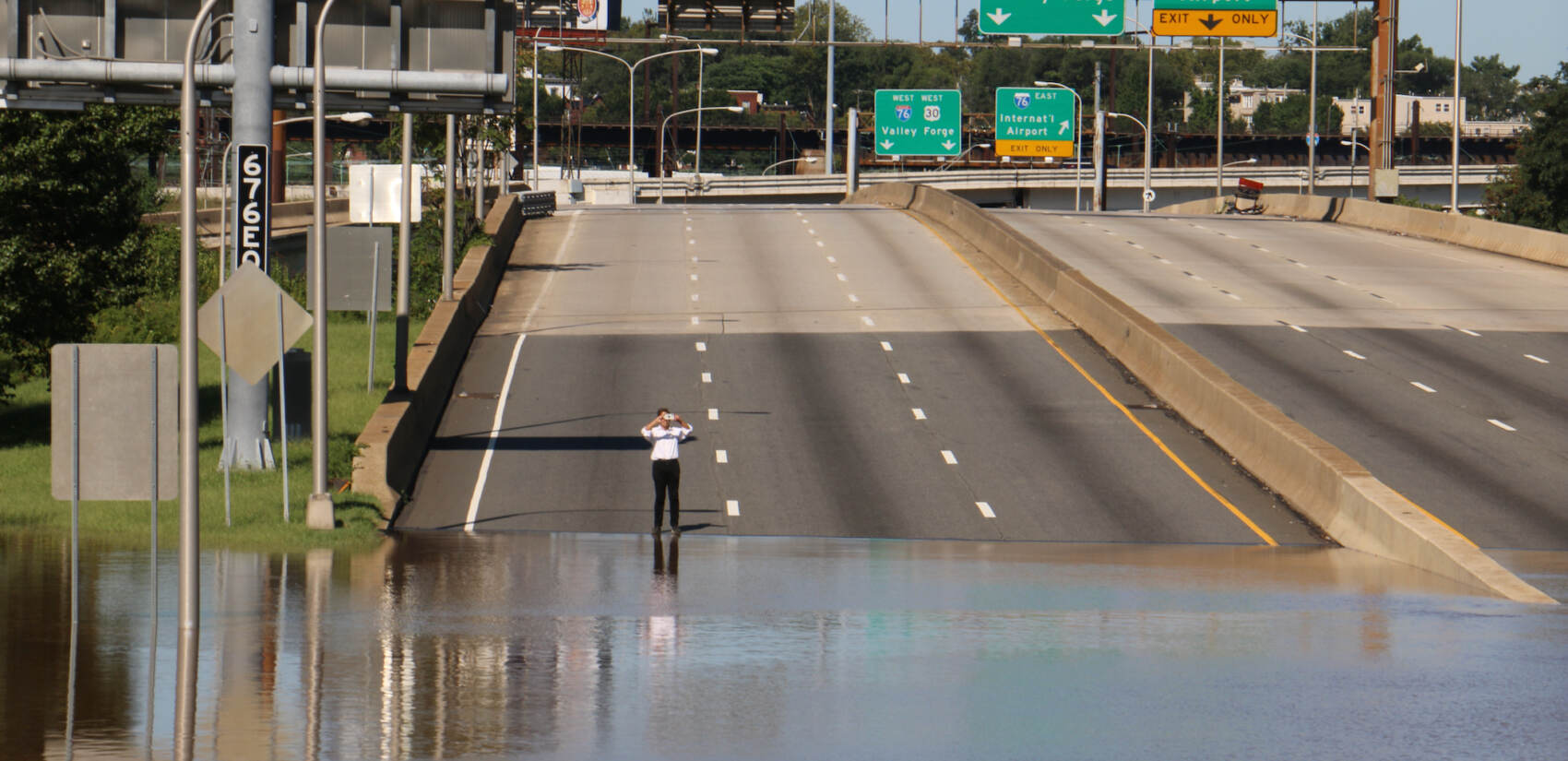
Significant portion of Chester County’s smallest community displaced
In the Borough of Modena, the storm spared very few. Jenny Hines called herself one of the “lucky” ones because her farmhouse sits near the top of a hill, but even she hasn’t fully recovered yet. The flood waters upended portions of the driveway and a tree fell on an addition of the house, exposing it to water damage.
The entire portion of the house needs to be replaced, but the insurance won’t cover it. Hines’ husband is a medically-retired Marine and she said that even veterans’ organizations have not been of any help.
“Nobody’s learned anything from the flood and there’s still people out here that need help that don’t have the endless wallet,” Hines said.
Paying high deductibles on what the insurance would cover has also stunted the path to recovery.
“That takes away money that you could have used for repairs, because you have this deductible,” Hines said.
Hines tried seeking relief from FEMA, but was then given the run-around and told to get help from her insurance company.
“People have forgotten that there’s still people dealing with the damage,” Hines said.
Home to just 544 residents, Chester County’s smallest municipality was disproportionately affected by the remnants of Ida. The storm forced the borough to condemn a section of 10 rowhomes that housed roughly 45 people — meaning roughly 10% of the population was displaced.
“When you look at it like that, it’s a lot of people, then you could see the effects on that, you know, within the community just with who’s not there anymore,” Modena Borough Council President Jennifer Daywalt said.
They’re unable to move back into their homes. They’ve all had to find new housing. The residents were put into hotels for months on end until they could find housing, but with Chester County facing a huge housing crisis, it has not been easy.
The borough is currently trying to secure grant funding from FEMA to rebuild the area.
“If we lose those homes, if we’re unable to rebuild, If FEMA denies us the funds to do that, we will lose those homes permanently, which means we will also lose that tax base and those funds that are part of our budget every year. And being such a small community, we are also the most impoverished community in Chester County. It makes a huge impact on us,” Daywalt said.
Nearly 18% of the population of Modena lives below the poverty line.
And with overdevelopment and stormwater issues failing to be addressed upstream along the Brandywine Creek, Daywalt said that the community remains vulnerable to future storms. The lack of funding has also prevented the borough from making changes for themselves.
“There’s just a lot of red tape that unfortunately, we all have to go through in order to get these funds, even though to us, it seems like a clear cut issue and what needs to be done,” Daywalt said.
Lack of preparedness takes center stage in Chester County farm country
Erica Lee lives in a farmhouse in Newlin Township with her husband, her daughter, her father, and her 90-year-old grandmother.
When the heavy rain first began pelting her property during the night of the storm, Lee and her husband were initially headed to help their neighbors corral their livestock and take them to higher ground. Fifteen minutes into their trip, rising water levels threatened their mission.
“We had to turn around ourselves and ride the railroad tracks home because of how bad the water had risen and how fast it had risen,” Lee said.
When they returned home, it was all hands on deck. They tried several times to park their cars on higher ground, but the water inevitably crept closer. By the time it was completely dark outside, Brandywine Creek had crested. Water surged onto the property.
“It came so fast that it was coming in our front door. It was coming in the runoff behind us,” Lee said. “Our vehicles also began to flood at that point and the electricity stayed on the whole time, so we could not get into the water safely without fear of electrocution.”
As the basement went completely underwater, Lee and her family were unable to save important documents and family items. The water eventually came up to 6 inches on the first floor.
Her family went to a higher level and could only watch from the window to see the damage that had been done. Cars were floating by. When the water eventually receded around midnight, Lee assessed the damage. Everything on the first floor as well as six cars and work vehicles were lost.
The next day, Lee’s family had to pay for industrial-sized fans and pumps to get all of the water out of the house. The scene outside was unforgettable.
“The aftermath looked like someone had dropped a bomb down here and it went off,” Lee said.
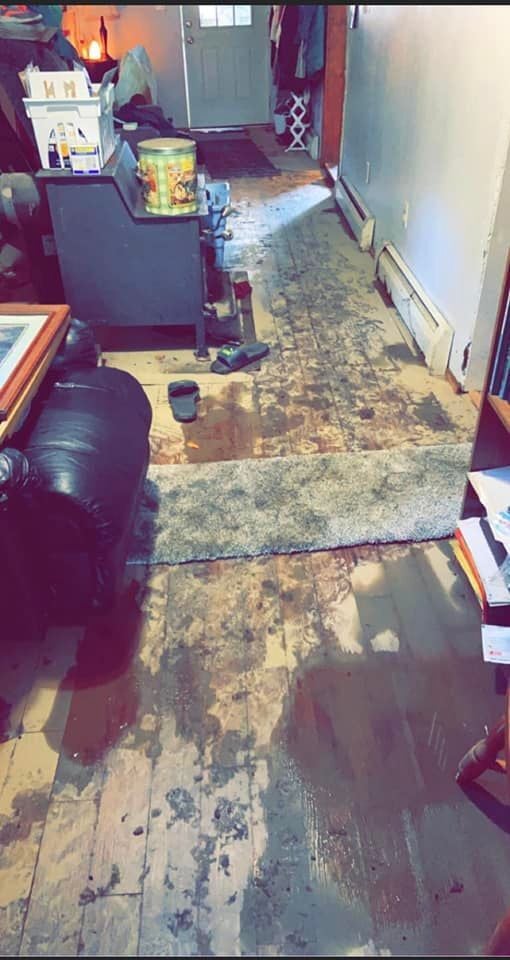
Flood insurance covered some of the expenses. However, Lee said that they have had to pay out of pocket for everything else. To this day, they have yet to fully recover. There is still water damage that needs to be fixed and new flooring that needs to be installed.
Home to more than 1,000 residents, Newlin Township is a small farming community that does not usually get media coverage. As such, Lee frequently attends township meetings and she is worried that there has not been enough focus on preparedness — or the lack thereof.
“There’s been no talk of any preparedness for any of this to happen again,” Lee said. “It’s just literally almost like they’re hoping that we live on a prayer that it doesn’t happen again.”
Organizations that stepped up to help survivors admit that they weren’t even prepared for the sheer amount of people in need of assistance. Sara Planthaber, a staff attorney at Legal Aid of Southeastern Pennsylvania (LASP), said that unpreparedness was a theme.
“We weren’t prepared to respond to something like this,” Planthaber said. “And also part of Legal Aid’s ongoing work is going to be about disaster preparedness, creating disaster resiliency, building these inter agency networks to be able to respond fast or to disasters once they occur, and to help individual residents prepare themselves for issues that may arise during a disaster.”
LASP helps low-income residents in Montgomery, Chester, Bucks and Delaware counties with civil legal issues. The remnants of Hurricane Ida put their workflow into overdrive. To date, LASP has opened up 102 cases, most of which were related to FEMA claims and landlord-tenant disputes. In total, LASP recovered more than $40,000 from FEMA for survivors of Ida, but the work is far from over.
“Legal Aid is still assisting survivors with those long term legal issues. So we’re still talking landlord tenant disputes, foreclosures, bankruptcies, FEMA recoupments,” Planthaber said.
Because FEMA has the right to audit individuals within three years of them receiving an award, the government agency will soon circle back, asking for individuals to provide receipts for how they spent the money.
If they didn’t spend the money on disaster-related issues or if they didn’t spend as much as they thought they were going to, they might be on the hook to pay FEMA back. LASP will help residents avoid any long-term legal issues.
Planthaber understands the frustration that people are having with aid organizations and the confusion that happens when groups fail to talk to one another. She believes more people could have been assisted.
“We could have helped more people had we had the infrastructure in place, which is what we’re doing now to be able to build that and making sure that people are aware that organizations are aware that this is a problem. Another storm is coming — this is going to happen more often and if we can get the word out to people about how to best prepare themselves for a disaster, then we can definitely improve those outcomes,” Planthaber said.
A lesson in resilience from Delco and Philly
Rebuilding from a disaster in ways that make your home more resilient is not easy, said Joseph Trainor, a professor in the Joseph R. Biden School of Public Policy and Administration at the University of Delaware, and a core faculty member of the university’s Disaster Research Center. He said some of the most effective ways to reduce the risk of flood damage — like elevating homes or utility lines — are expensive, and getting assistance is time-consuming.
“I think people really struggle with, do I put my time into understanding and taking these stronger measures and … doing something that protects me for the long term? Or do I get my house back together and try to get my life moving with some semblance of normalcy?” he said.
But Trainor said it’s worth thinking about doing what you can, especially as climate change increases risk.
“It’s really important,” he said. “When we look at the exposure to floods, when we look at exposure to severe weather, the signals all suggest that these things are getting worse.”
Katherine Young and Anthony Young own Hank’s Place in Delaware County. The family-owned restaurant has been in business in Chadds Ford since 1950. They have never experienced a flood this bad before.
They watched their security cameras’ feeds from home as 21 feet of water covered their restaurant.
“We lost all of our kitchen equipment, dining room, equipment, chairs, everything. So everything was considered a total loss. It’s taken us a long time to recover. And we’re not fully recovered yet. We are in the process of rebuilding our business,” Katherine Young said.
The business has operated a small food trailer in the parking lot as it jumps through the regulatory hoops of attempting a comeback in Kennett Square in October, while it attempts a complete rebuild in Chadds Ford.
Resilience measures are front and center as small business owners and residents alike think of ways to avoid the next Ida.
“FEMA is requiring us to raise the building 6 feet off the ground, just like you’d see down the beach, the pylons, that sort of thing, we’re taking it a little further — and we’re actually gonna go 9 feet off the ground just for an extra 3 feet of protection,” Anthony Young said.
And as “just a small, little family restaurant,” he said, there are no other options if they want to remain open under the threat of the next big storm.
Some Philadelphians have been able to build back more resiliently.
At an old factory-turned-sleek condo building in Center City Philadelphia, new water-resistant tiles cover the lobby floor. They snake nearly 3 feet up the walls, to around where floodwaters reached last fall. In the back of the building, up above the floodplain, new utility rooms will house essential electrical equipment, moved up from the basement.
“So in the future, if there is another flood, … we’ll be able to hopefully make a quicker recovery,” said Sven Schroeter, who lives on the 10th floor of the building in the Logan Square neighborhood.

Schroeter, an architect, has helped his condo association implement these changes since Ida — when the building’s residents were displaced for about a week. Floodwaters filled several streets surrounding Schroeter’s building and rushed into the basement. The elevators broke and the building lost power, he said. Schroeter had to stay in a friend’s apartment.
“I remember at the time on that day, I literally could not get into my home because the building was completely surrounded by water,” Schroeter said. “It was pretty catastrophic. It was unlike anything I’ve ever seen.”
The condo association also plans to move elevator equipment up to the roof of the building’s parking garage, where cars floated during Ida, Schroeter said, and has purchased flood barriers to put up around the building ahead of storms.
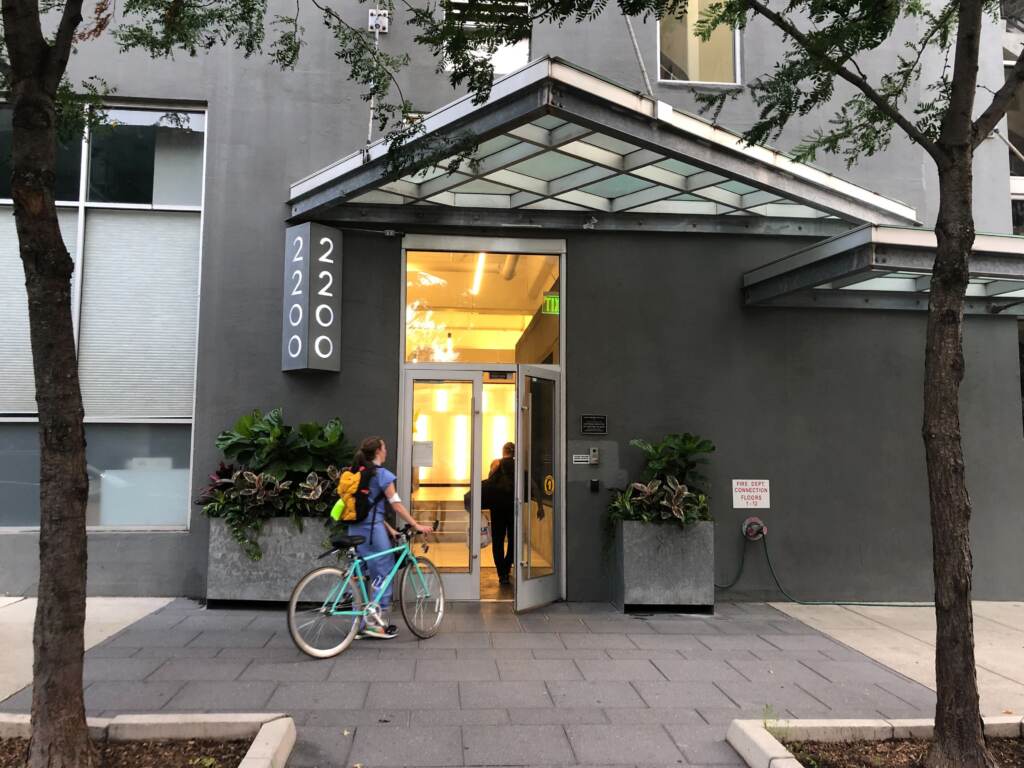
The condo association is financing the renovations primarily with an insurance reimbursement from the flood, Schroeter said. Condo owners may end up contributing to some of the improvements, like the flood barriers, through condo fee assessments.
Schroeter hopes to get the improvements finished soon — before another storm hits.
“I like living here and I want to keep living here,” he said. “We’ve learned a lot of valuable lessons, and I think coming out of it, we’re going to be better prepared for challenges like this in the future.”
WHYY is your source for fact-based, in-depth journalism and information. As a nonprofit organization, we rely on financial support from readers like you. Please give today.





